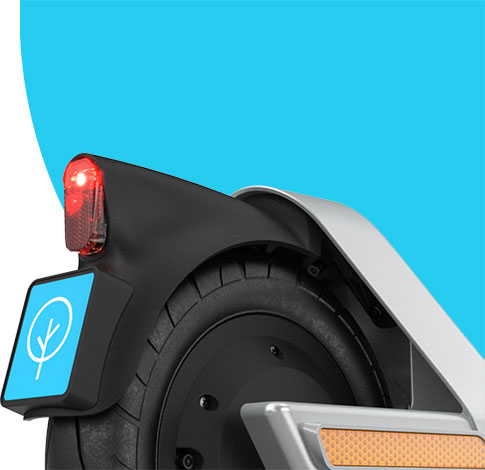Once nailing the basics, it’s time to level up with a conversation about the most common real-world hazards, and the three most important strategies to avoid them. These pro tips are relevant to new and seasoned Birders and cyclists alike, and they are the hallmark of any rider who knows how to stay out of trouble. Here they are:
- Take the Lane: Whether you are riding in a bike lane or even in a car lane, it’s important to ride out near the middle of the lane when safe.
When the lane isn’t wide enough for both a car and a scooter side by side, take the lane. This takes a little courage at first because it’s counterintuitive: isn’t it safer to ride as close as possible to the curb? Usually not. For riding on city streets, it’s almost always safer to ride closer to the middle of the lane because it’s safer to be visible and predictable than to slink on the margins. In bike lanes, it’s advisable to even ride towards the outer edge of the lane, closer to moving traffic.
Why? When you ride close to the curb, you are less likely to be seen, and you are more likely to encounter a car door swinging open that could cause you to swerve into the path of an unsuspecting driver. If a rider behind you starts honking, that’s good: it means they can see you! If they see you, they will almost always try their best not to hit you. In sum, don’t cower in traffic, ride like a VIP (visible, intrepid, predictable) instead.
- The Box Turn: One of the most nerve-wracking traffic situations, particularly for newer riders, is having to make a left turn with oncoming traffic on a busy city street.
Indeed, intersections are where most crashes happen, and it’s not always easy to tell if drivers are going to turn or go straight. The “Box Turn” is a great go-to safety move whereby you make a left turn in two straight stages. First, simply keep going north to the far corner of the intersection and stop. Then, as you are stopped at that far corner, simply pivot left and wait for the next green light before heading west. In California, the Box Turn is required by law.
- The Pull Over: We need more bike lanes, period.
In the s.h.a.r.e. trainings we talk with riders about how important it is to get everyone involved in local efforts to win more bike lanes– or LIT (Light Individual Transportation) lanes as the policy leaders now call them in Atlanta. Until we do, it’s a car-centric world and we are just riding in it. There are plenty of times when, for your own safety, it makes sense to just pull over, stop, and wait until it’s safe. The “right hook” is a common type of crash that happens when a right-turning vehicle– especially a big one– turns in front of you. If, as you near an intersection, you see or hear a large vehicle approaching from behind, simply pull over and stop before you enter the intersection, allowing the vehicle to pass and/or turn before you proceed.
Moving through the city on a Bird can feel like flying, and it can also make you feel nervous at first. That feeling has its own strengths, you are more sensitive and you can tune in to sights and sounds that will help you navigate city streets safely. As you get more experienced, you’ll become even more aware of the cues of the street, and you’ll ride with even more confidence. And with these tips, you can also become a more informed and aware driver when you are behind the wheel.
Happy Birding!

